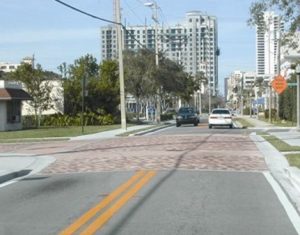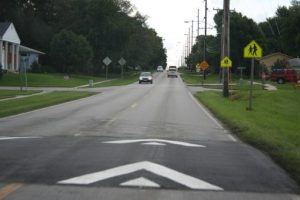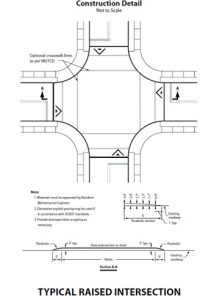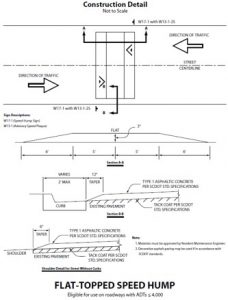Vertical Displacement
Vertical treatments are aimed at drivers slowing down to avoid the discomfort created from the treatment.
Treatment Options

Vertical physical displacement is different from horizontal displacement due to the uncomfortable feeling that drivers get when traversing these treatments. While horizontal treatments are aimed at requiring drivers to lower their speeds to feel safe, vertical treatments are aimed at drivers slowing down to avoid the discomfort created from the treatment. This section discusses these vertical physical displacement treatments:
References

Hughes Warren, Debra Chappell, and Shyuan-Ren (Clayton) Chen. Chapter 6. Geometric Design Treatments. Innovative Intersection Safety Improvement Strategies and Management Practices: A Domestic Scan. Federal Highway Administration, 2006.
SCDOT. SCDOT Traffic Calming Guidelines. South Carolina Department of Transportation, Traffic Engineering, Columbia, SC, Revised 2006.


